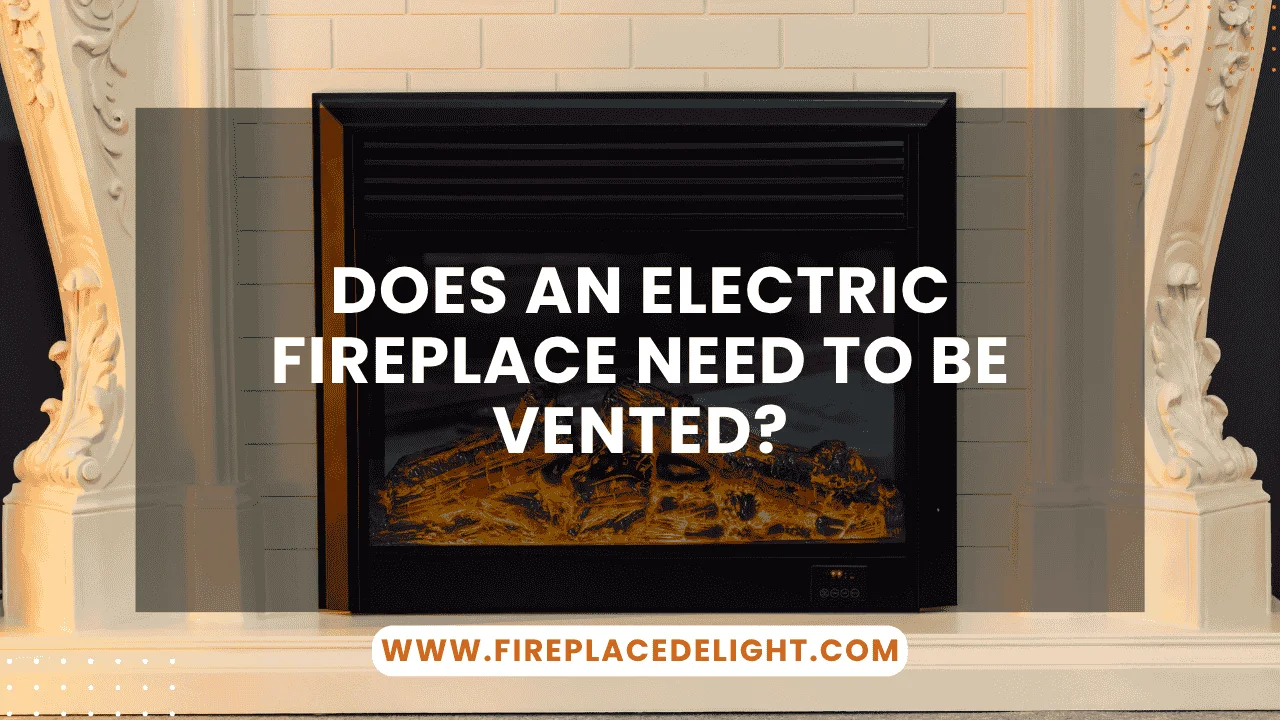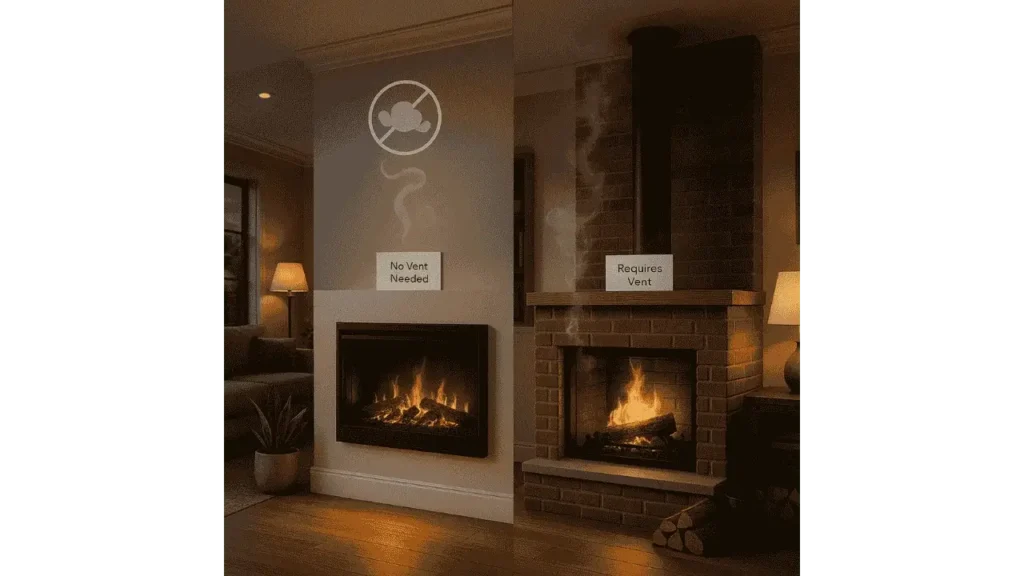Electric fireplaces don’t need to be vented because they don’t burn fuel or produce smoke, fumes, or toxic byproducts. This often surprises homeowners used to wood or gas units. However, the truth is that electric fireplaces operate without combustion, which means there is nothing to exhaust. I’ve had clients convert entire rooms with these units purely because they’re hassle-free, and honestly, the air stays cleaner, too.
How Electric Fireplaces Work?
No Combustion Involved
Unlike traditional fireplaces, electric ones don’t involve burning logs or gas. Instead, they rely on LED lights to mimic flames and either infrared or fan-forced convection systems to generate heat. Because there’s no fuel being burned, they don’t release any carbon monoxide, soot, or ash. As indoor heating expert Lindsay Moore notes,
“The absence of combustion in electric fireplaces makes them not only safer but also far more versatile in where you can install them.”
Flame Effects and Heating Functions
Electric fireplaces let you enjoy the glow of firelight without heat or use the heater independently. The LED flame display is purely visual, and the heat is generated by a separate internal element. It’s ideal for all-season ambiance, letting you set the mood even on warm days.
Why Traditional Fireplaces Need Venting?
Combustion Byproducts
Traditional fireplaces burn materials like wood or gas, which produce carbon monoxide, smoke, and other harmful gases. These must be vented through a chimney or direct vent system to prevent indoor air contamination. This venting is not optional, it’s a safety requirement.
Structural and Safety Requirements
Codes require proper chimney construction, vent sizing, and clearance from flammable materials. That’s because improper venting can trap deadly gases or cause fires. Electric fireplaces avoid all of these risks by eliminating the combustion process.
Why Electric Fireplaces Don’t Require Venting?
No Emissions or Exhaust
Electric fireplaces generate heat through electricity, not flame. With no burning fuel, there’s no exhaust to manage. As HVAC specialist Mark Jensen explains,
“Electric fireplaces are clean-energy appliances. What you plug in is all you deal with, there’s no smoke, no fumes, no need to move air outside the home.”
Plug-and-Use Simplicity
One of the biggest advantages is simplicity. Just plug it into a standard outlet and it’s ready to go. There’s no need to install vent pipes, chimney liners, or combustion air kits. That also means less long-term maintenance and easier relocation if you change your room layout.
Learn More: 21 Fireplace Facelift Ideas
Additional Benefits of a Ventless Fireplace
Flexible Installation Options
Because no venting is required, electric fireplaces can go in any room, bedrooms, bathrooms, basements, and even rental units. Wall-mounted, freestanding, and recessed models make it easy to fit your style and layout. You’re not tied to a chimney wall or gas line.
Reduced Installation Costs
With no chimney or vent system to build, labor and material costs drop dramatically. In many cases, homeowners install electric fireplaces themselves. It’s one of the most budget-friendly ways to upgrade a room’s aesthetic while adding supplemental heat.
Misconceptions and Clarifications
“Flames” Don’t Mean Fire
Many buyers are fooled by how realistic the flames look. But it’s all LED technology, no real fire, no burning. You get the comfort and visual warmth of a traditional fireplace with none of the fire risk.
Heat Output Isn’t Compromised by No Vent
Since there’s no need to vent hot air outside, 100% of the generated heat stays in the room. That makes electric fireplaces surprisingly efficient for zone heating. Some models can warm up to 400–500 square feet comfortably.
Conclusion
Electric fireplaces don’t need to be vented because they don’t burn fuel, which means no smoke or dangerous gases are released. Their flameless operation makes them a smart, safe, and stylish option for modern living. With no chimney, no ductwork, and minimal maintenance, they’re ideal for anyone looking to add warmth and ambiance without complicating their space.
- 27 Farmhouse Fireplace Ideas That Bring Warmth & Charm - August 18, 2025
- 25 Fireplace Lighting Ideas to Illuminate Your Hearth - August 7, 2025
- How to Replace an Electric Fireplace Switch? - August 5, 2025



